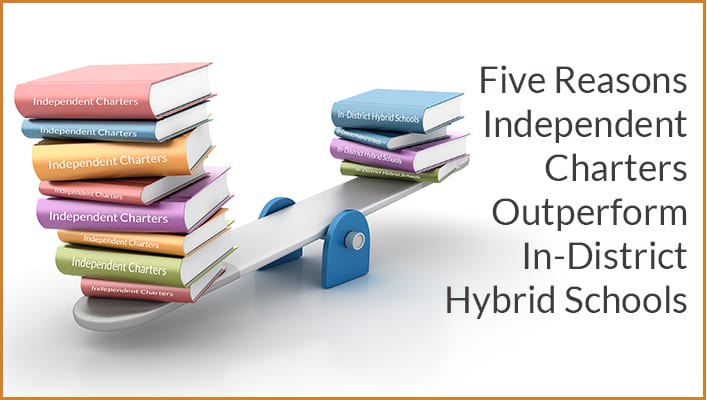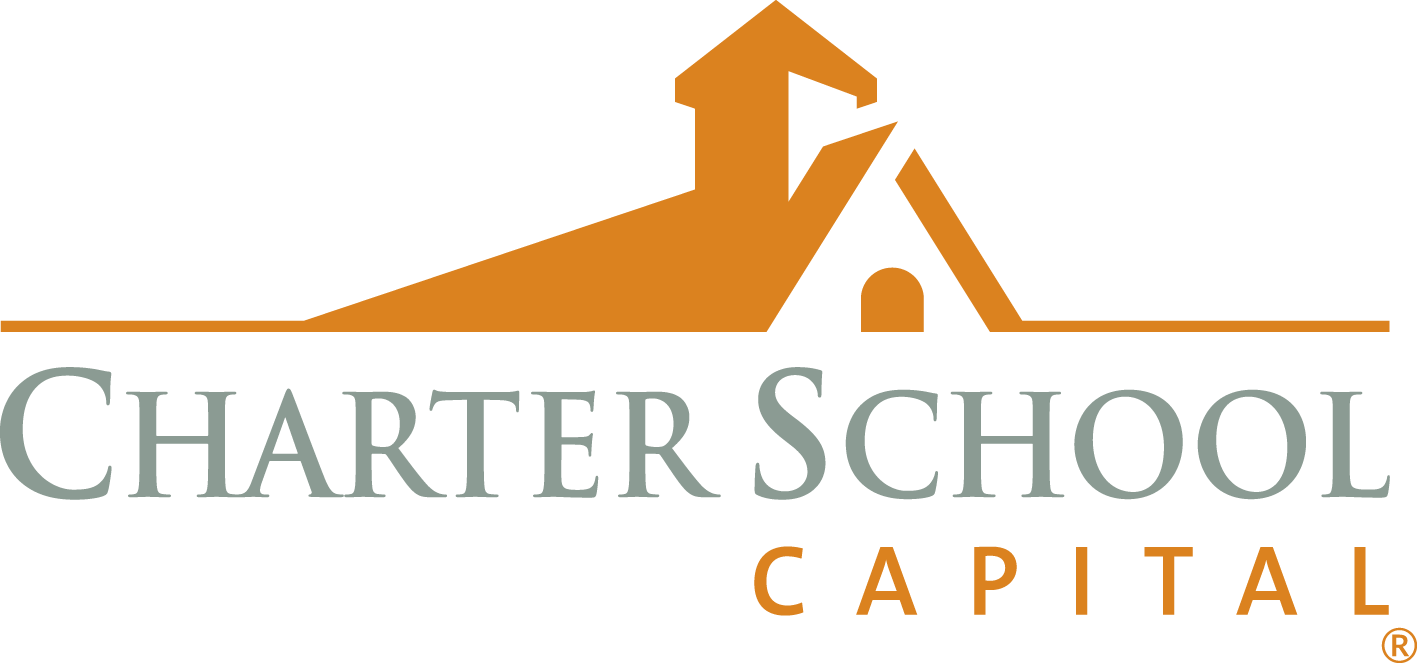 Five Reasons Independent Charters Outperform In-District Hybrid Schools
Five Reasons Independent Charters Outperform In-District Hybrid Schools
Editor’s Note: This post was originally published here on August 23, 2018, by Forbes and written by Emily Langhorne, policy analyst for the Reinventing America’s Schools project at The Progressive Policy Institute.
We think it’s vital to keep tabs on the pulse of all things related to charter schools, including informational resources, and how to support charter school growth and the advancement of the charter school movement as a whole. We hope you find this—and any other article we curate—both interesting and valuable.
Read on for the complete article.
Five Reasons Why Independent Charters Outperform In-District Autonomous Schools
Over the past 15 years, cities across the country have experienced rapid growth in the number of public charter schools serving their students. Charter schools are public schools operated by independent organizations, usually nonprofits. They are freed from many of the rules that constrain district-operated schools. In exchange for increased autonomy, they are normally held accountable for their performance by their authorizers, who close or replace them if they fail to educate children. Most are schools of choice, and unlike magnet schools in traditional districts, they are not allowed to select their students. If too many students apply, they hold lotteries to see who gets in.
The charter formula – autonomy, accountability, diversity of learning models, choice and operation by nonprofits – is transforming urban education. In states with strong charter laws and equally strong authorizers, charter schools have produced impressive students gains, especially in schools with high-minority, high-poverty populations.
Recently, districts from Boston to Los Angeles have tried to increase student achievement by replicating parts of this formula, in particular giving their school leaders more autonomy.
District-run “autonomous” schools are a hybrid model— a halfway point between charters and traditional public schools. They’re still operated by district employees, but school leaders can opt out of many district rules and, in some models, union contracts.
The Progressive Policy Institute’s recent analysis of state exam scores from 2015 and 2016 in Boston, Memphis, Denver, and Los Angeles shows that public charter schools outperformed both traditional public and in-district autonomous schools on standardized tests in three of the four cities studied. In the one exception, Memphis, the district concentrated its best principals and teachers in, and provided extra funding and support to, its autonomous schools.
The analysis reveals that district-run autonomous schools in these cities sometimes performed better than traditional public schools, but they seldom performed as well as independent public charters. So the big question is: what do independent charter schools have that district-run autonomous schools are missing?
Below are five reasons why public charter schools outperform district-run autonomous schools.
1. Most Independent Charter Schools Have True Autonomy
Charter school leaders have true autonomy over staffing, school models, curriculum, budgeting, school calendars and schedules and professional development. Without the constraints of district policies, charter leaders can create educational models that work best for their students – whether Montessori, project-based, dual-language, or others. They can choose curriculum and materials that engage their teachers and students. They can manage their own school budgets, using money creatively and effectively and to meet the unique needs of their students. If needed, they can extend the school year.
Many in-district autonomous schools allegedly have these freedoms too. In reality, however, the long reach of the district’s central office sometimes hamstrings them, making their autonomies little more than paper promises.
2. Most Charter Schools Are Schools of Choice
Because independent charter schools are schools of choice, charter leaders can develop schools with specific educational models and cultures. Children learn differently, come from different backgrounds, speak different languages, have different interests, and thrive in different environments. Having multiple learning models allows parents to choose the schools that best fit the needs of their children.
When a district assigns children based on their neighborhoods, as some do, it’s much harder to have diverse school designs. Most parents would object to being told their child must attend a specialized school – such as Montessori school, a STEM school, or a performing arts school – so neighborhood schools often rely on the traditional one-size-fits all model.
In contrast, schools of choice can specialize. And when families have choices, both parents and students are more likely to “buy-in” to the school’s culture and academic philosophy.
Giving families the choice to attend a variety of schools also creates a second layer of accountability for independent charters, because the public dollars follow that choice. School operators are in direct competition for funds, and parents have much more leverage in demanding what their children need because they can send their children elsewhere and the money will follow them.
3. Most Independent Charter Schools Are Held Accountable for Student Performance
Unless forced to by the state, elected school boards rarely close or replace failing schools – because it’s political suicide. Teachers unions often initiate district-wide protests over school closings, and parents and community members often join in. Because turnout in school board elections is often under 15 percent, their votes may determine the winners. For a school board member, closing or replacing a failing school often means losing the next election – even if it benefits children.
Most charter schools are not unionized, however. They answer to authorizers, which often have appointed boards. Even when an elected board closes a charter, it may trigger a protest from one building, but not from all teachers in a city or district.
If they are doing their jobs, authorizers hold schools accountable for student achievement benchmarks laid out in their charters, which are essentially performance contracts. Every few years, authorizers review their schools. If the students aren’t learning, the school will undergo a period of probation – after which time, if student performance does not improve, authorizers will close or replace the failing school.
When authorizers fail to hold schools accountable, charter schools generally don’t perform much better than traditional public schools. Studies show that, in states where authorizers consistently close low-performing charters, charter students far outpace their district counterparts on standardized tests. Where they don’t close schools, charters often underperform their district counterparts.
4. Most Independent Charters Go Through a Careful Authorization Process
Strong authorizers also investigate charter operators prior to allowing them to open schools. Not all parents have the ability to assess schools, so effective authorizers ensure that the schools available to their children are of high quality. This requires evaluation of performance and replacement of failing schools, but also scrutiny of applications to ensure schools have a strategy for success before they open. As part of the authorization process, charter applications undergo a thorough vetting process before authorizers grant applicants a charter and allow them to open a school.
5. Independent Charter Sectors Are Sustainable
The Achilles heel of most in-district autonomous approaches is sustainability. In a large district, the autonomy agenda often rests with one or two innovative leaders at the district level. When they depart (as they always do), the bureaucracy usually reasserts its control. People in bureaucracies tend to resent any special privileges given to those in “autonomy zones” – in all sectors of government. Education is no different. In-district autonomous schools are vulnerable to shifting political winds and changes in attitudes at district headquarters, either of which can endanger their autonomy. In contrast, independent charters operate outside of school districts, so it would take a change in state law, rather than district leadership, to infringe upon their autonomy.
 Since the company’s inception in 2007, Charter School Capital has been committed to the success of charter schools. We provide growth capital and facilities financing to charter schools nationwide. Our depth of experience working with charter school leaders and our knowledge of how to address charter school financial and operational needs have allowed us to provide over $1.8 billion in support of 600 charter schools that have educated over 1,027,000 students across the country. For more information on how we can support your charter school, contact us. We’d love to work with you!
Since the company’s inception in 2007, Charter School Capital has been committed to the success of charter schools. We provide growth capital and facilities financing to charter schools nationwide. Our depth of experience working with charter school leaders and our knowledge of how to address charter school financial and operational needs have allowed us to provide over $1.8 billion in support of 600 charter schools that have educated over 1,027,000 students across the country. For more information on how we can support your charter school, contact us. We’d love to work with you!